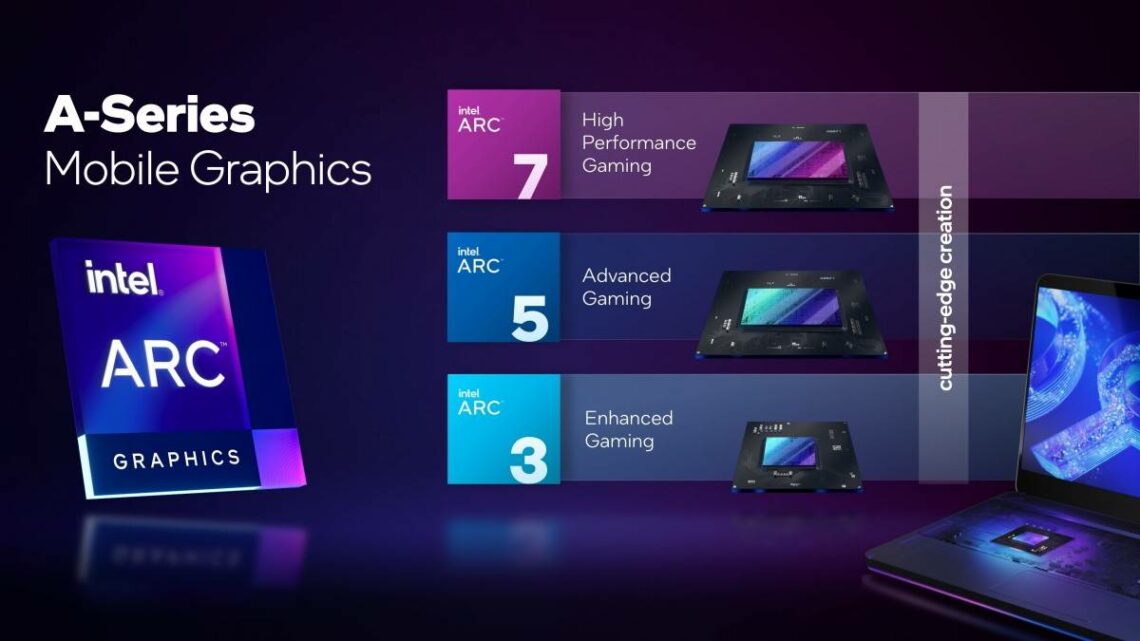Intel has revealed details of the new Arc A-series GPU or discreet graphics processors for laptops. The new GPUs are based on the Xe HPG architecture and the first batch is dedicated towards laptops, with desktop and workstation counterparts arriving later this year.
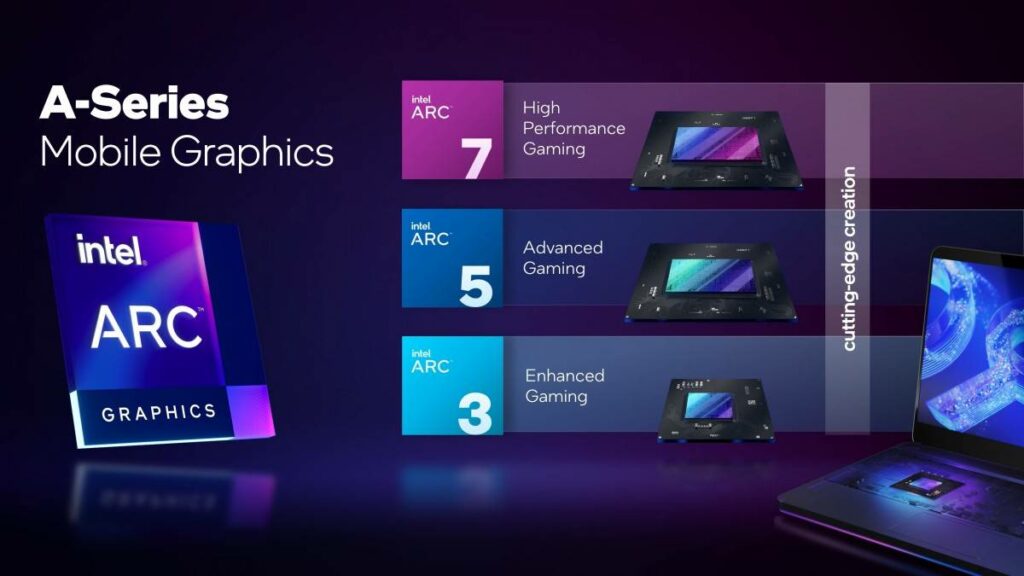
The company announced details of the Intel Arc 3, Arc 5, and Arc 7 series of GPUs with Arc 3 being the entry-level series based on the smaller ACM-G11 die, while the Arc 5 and Arc 7 are based on the larger ACM-G10 die. The Arc 3 series includes two models, the A350M and the A370M with the first one featuring 6 Xe-cores, 6 ray tracing cores, and 1150MHz graphics core clock, running at 25-35W power envelope.
Meanwhile, the A370M has 6 Xe-cores, 8 ray tracing cores, and 1550MHz graphics clock, running at 35-50W power envelope. Furthermore, these GPUs for laptops have 4GB GDDR6 memory, and 64-bit wide memory bus. Moreover, the Arc 5 features just one GPU model, the A550M, which carries 16 Xe-cores, 16 ray tracing cores and 8GB of GDDR6 memory.
The Intel Arc 7 series on the other hand comes with two models, the A730M and A770M, carrying 24 and 32 Xe-cores and ray tracing cores, respectively. However, the former comes with 12GB of memory, while the later is equipped with 16GB of memory. It bears mentioning that the Arc 5 and Arc 7 series will arrive later in the year.
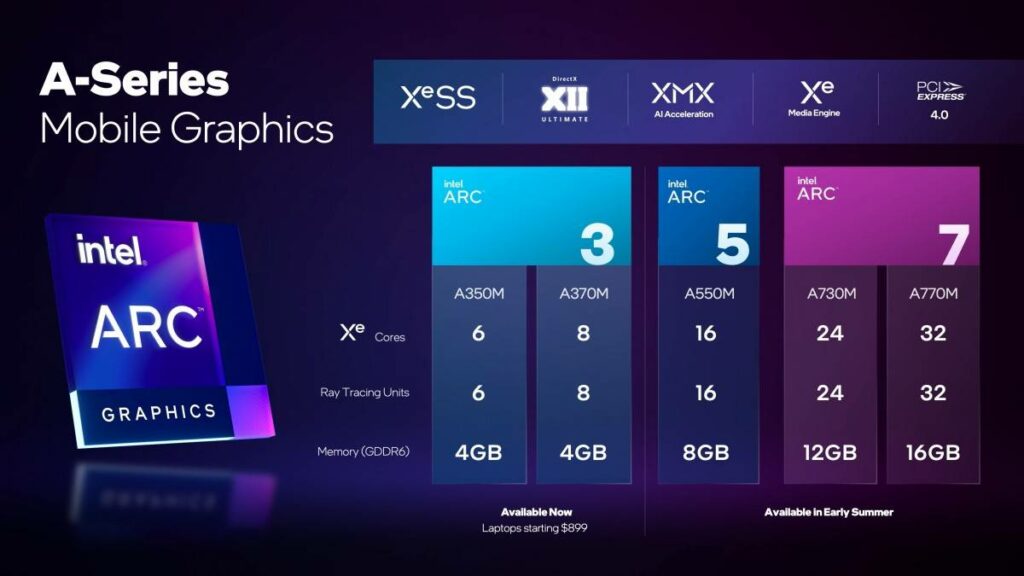
In terms of gaming performance, Intel is marketing the Arc 3 series as targeting 1080p 60fps gaming. According to the company, the Intel Arc A370M with the Core i7-12700H can achieve over 60FPS in several AAA titles at medium settings and over 90FPS in Esports titles.
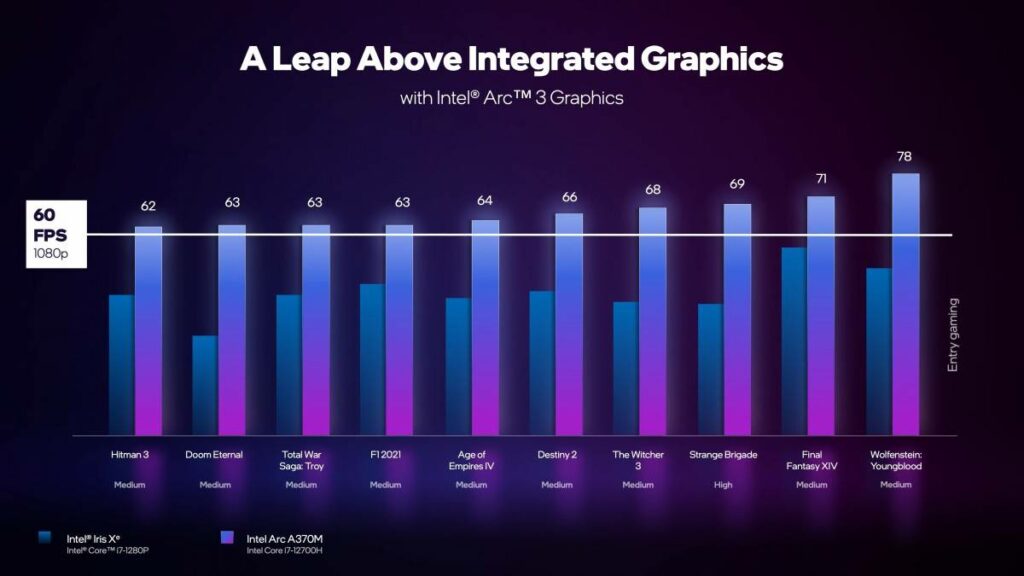
The GPU includes XMX AI engine, which can be seen as the equivalent to Nvidia’s Tensor cores. This enables machine learning and AI-acceleration, which powers features such as XeSS, which is Intel’s version of DLSS. Moreover, the Arc A-series GPU are the first in the industry to support hardware accelerate AV1 encoding, making it possible to not just consume but also create content in this modern, efficient codec that is rapidly being adopted in the industry.

Intel Arc GPUs will also include a feature called Deep Link, which shares resources between the Arc GPU and the Intel CPU to improve performance. Dynamic Power Share automatically adjusts power between the CPU and GPU, and allocates it where its more useful for 30% more performance. Hyper Compute uses the AI capabilities of the GPU and CPU to accelerate tasks by 24%. Meanwhile, the Hyper Encode utilizes both the GPU and GPU to speed up encoding tasks by 60%.
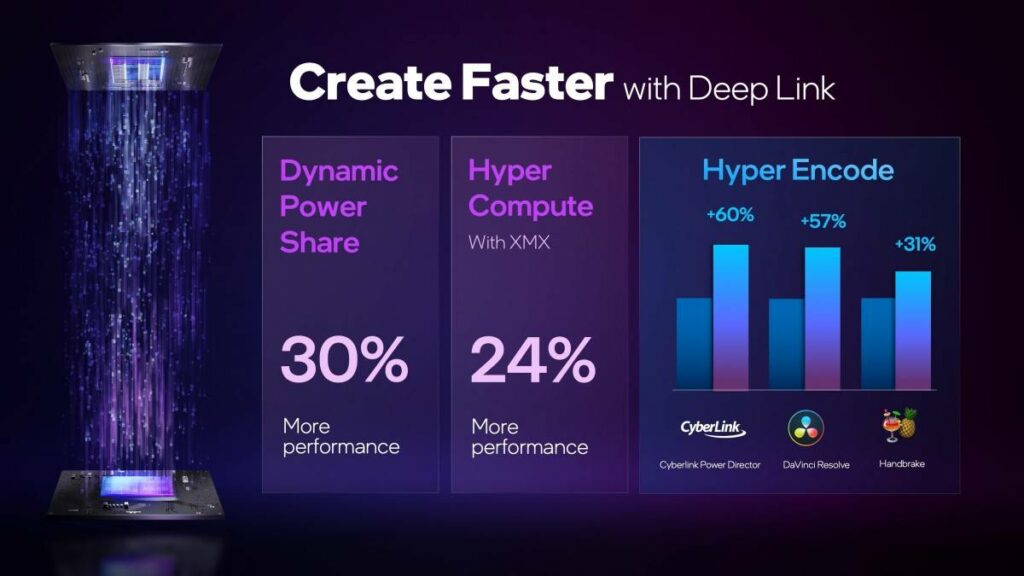
Moreover, Intel also showed off its Arc Control Console / Software, where users can track new game drivers, tune their GPU’s performance, access streaming related features, and their game library. The Arc Control will work for both, Arc as well as Iris GPU and will not require a login to work like the GeForce Experience.
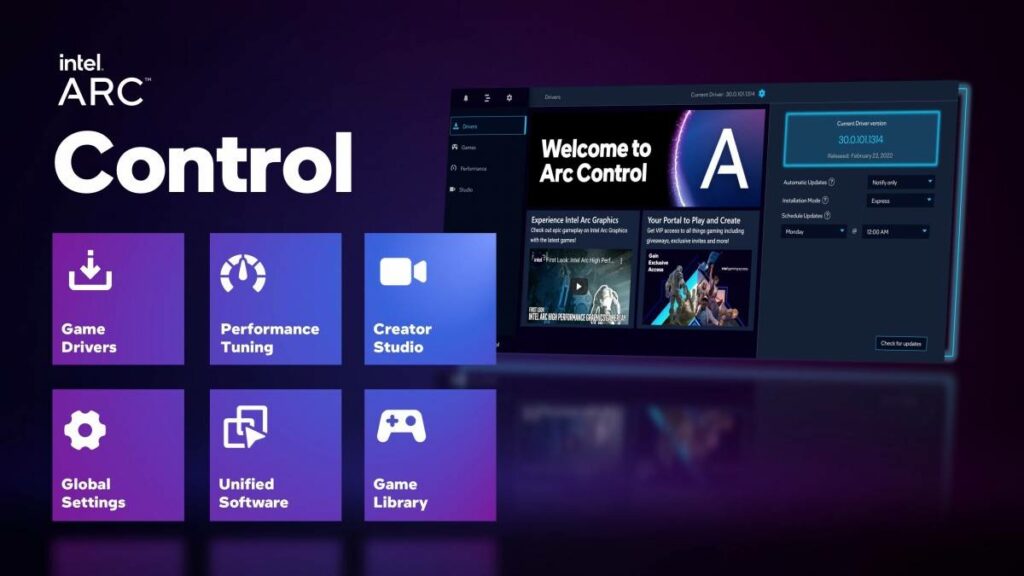
Meanwhile, Intel also gave a short tease of their desktop Arc GPUs through a short video on social media. The company has not revealed any information about the specifications of these cards and the GPUs are expected to be released later this year.
Get ready to game with this first look at our limited-edition #IntelArc A-Series graphics card for desktop.
— Intel Graphics (@IntelGraphics) March 30, 2022
See it in 4K: https://t.co/mJGikyvNED pic.twitter.com/Yjtcwekbtj
Read more: Intel Launches World’s Fastest Desktop Processor.
